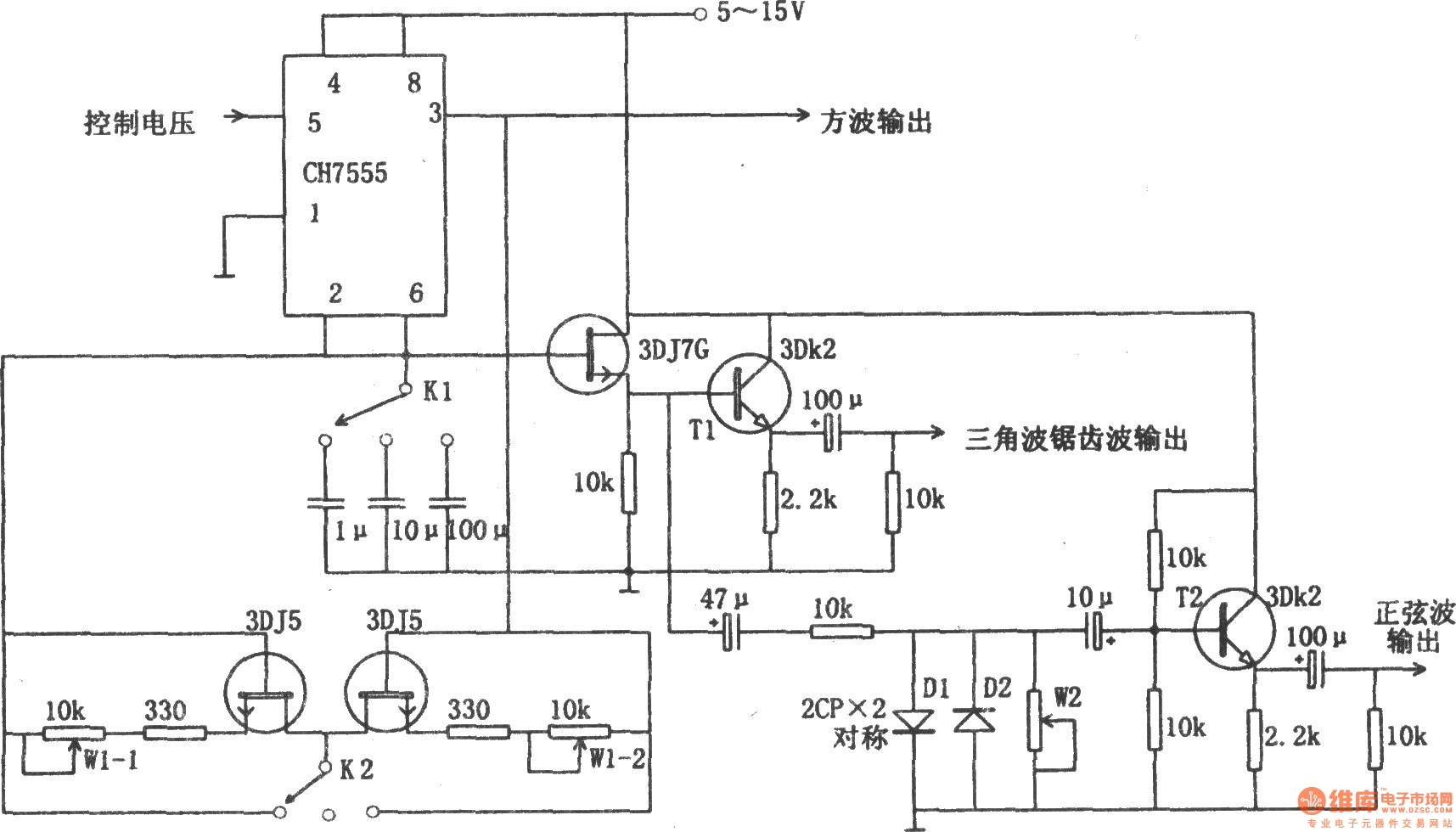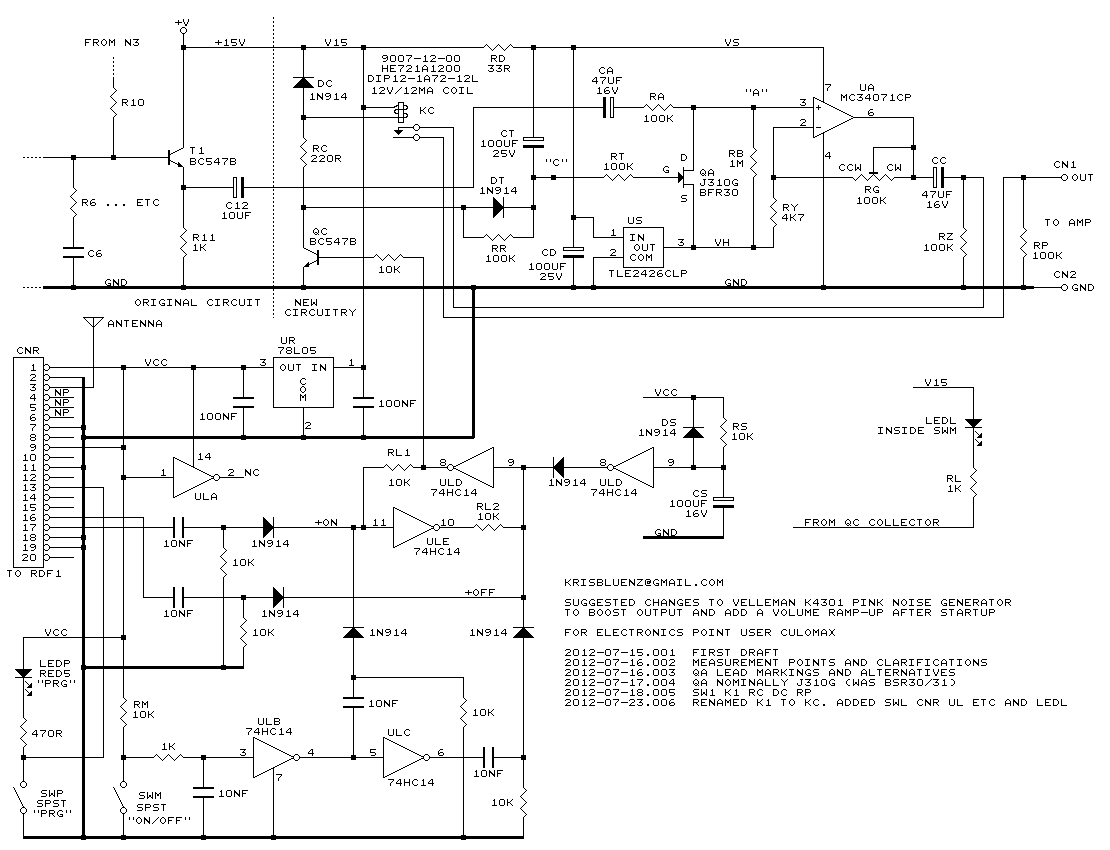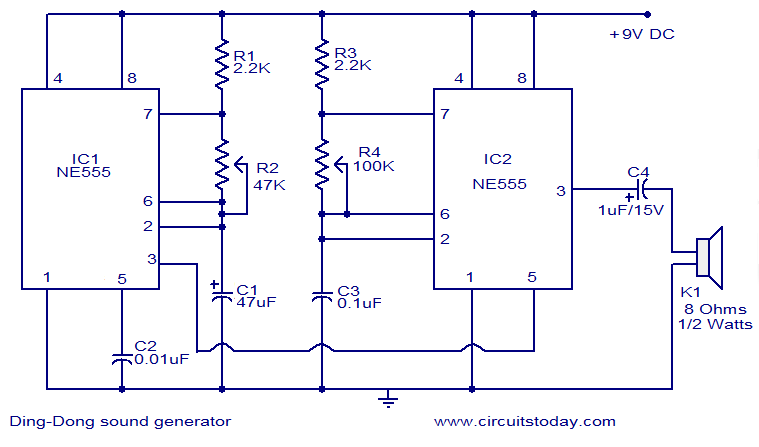
The function generator composed of 555 timer

The chart illustrates a function generator circuit utilizing a 555 timer. This circuit includes a CH7555 timer along with several transistors and RC components. It is capable of generating triangle waves, square waves, sine waves, sawtooth waves, and square wave sweeps simultaneously. The ramp can be either positive or negative. The frequency of the various waveforms is adjustable from 0.1 Hz to 100 kHz.
The function generator circuit based on the 555 timer is a versatile tool in electronics, widely used for generating different types of waveforms for testing and signal processing applications. The core component, the CH7555 timer, is configured in astable or monostable mode to produce continuous waveforms.
In astable mode, the circuit oscillates between high and low states, producing square waves. By adjusting the resistor and capacitor values in the RC timing network, the frequency and duty cycle of the output waveform can be modified. The inclusion of additional transistors allows for signal amplification and waveform shaping, enabling the generation of triangle and sawtooth waveforms through linear ramping techniques.
The sine wave output can be achieved by filtering the square wave using RC low-pass filters, which smooth the transitions between high and low states, resulting in a more sinusoidal output. The circuit's ability to produce both positive and negative ramps is facilitated by the configuration of the components, allowing for a wide range of applications, including audio signal generation and waveform analysis.
The adjustable frequency range from 0.1 Hz to 100 kHz makes this function generator suitable for various testing scenarios, from low-frequency applications like audio testing to high-frequency applications in RF circuits. The amplitude of the output signals can also be adjusted, providing flexibility for different interfacing requirements with other electronic devices.
Overall, the function generator circuit based on the 555 timer is an essential component for anyone working in electronics, providing a reliable and adjustable source of multiple waveform types for experimentation and development.The chart shows a function generator circuit composed of 555 timer. The circuit consists of a CH7555 timer and some transistors and RC components. It can generate triangle wave, square wave, sine wave, sawtooth and square wave sweep simultaneously. Ramp can be positive or negative. The frequency of various waveforms is adjustable from 0.1Hz ~ 100kHz, the amp.. 🔗 External reference
The function generator circuit based on the 555 timer is a versatile tool in electronics, widely used for generating different types of waveforms for testing and signal processing applications. The core component, the CH7555 timer, is configured in astable or monostable mode to produce continuous waveforms.
In astable mode, the circuit oscillates between high and low states, producing square waves. By adjusting the resistor and capacitor values in the RC timing network, the frequency and duty cycle of the output waveform can be modified. The inclusion of additional transistors allows for signal amplification and waveform shaping, enabling the generation of triangle and sawtooth waveforms through linear ramping techniques.
The sine wave output can be achieved by filtering the square wave using RC low-pass filters, which smooth the transitions between high and low states, resulting in a more sinusoidal output. The circuit's ability to produce both positive and negative ramps is facilitated by the configuration of the components, allowing for a wide range of applications, including audio signal generation and waveform analysis.
The adjustable frequency range from 0.1 Hz to 100 kHz makes this function generator suitable for various testing scenarios, from low-frequency applications like audio testing to high-frequency applications in RF circuits. The amplitude of the output signals can also be adjusted, providing flexibility for different interfacing requirements with other electronic devices.
Overall, the function generator circuit based on the 555 timer is an essential component for anyone working in electronics, providing a reliable and adjustable source of multiple waveform types for experimentation and development.The chart shows a function generator circuit composed of 555 timer. The circuit consists of a CH7555 timer and some transistors and RC components. It can generate triangle wave, square wave, sine wave, sawtooth and square wave sweep simultaneously. Ramp can be positive or negative. The frequency of various waveforms is adjustable from 0.1Hz ~ 100kHz, the amp.. 🔗 External reference





